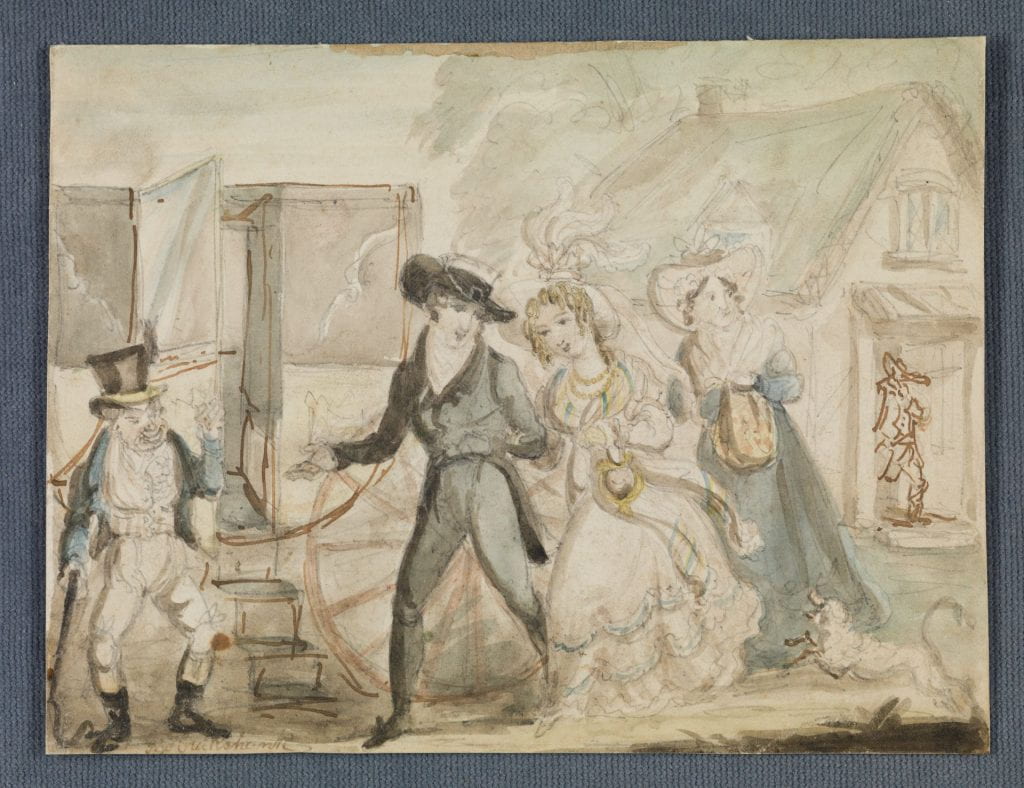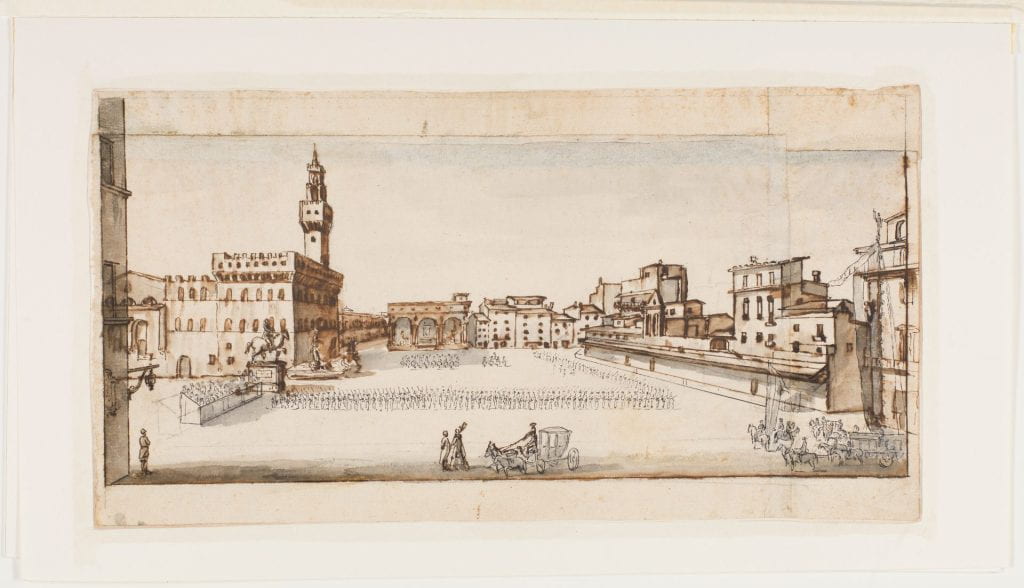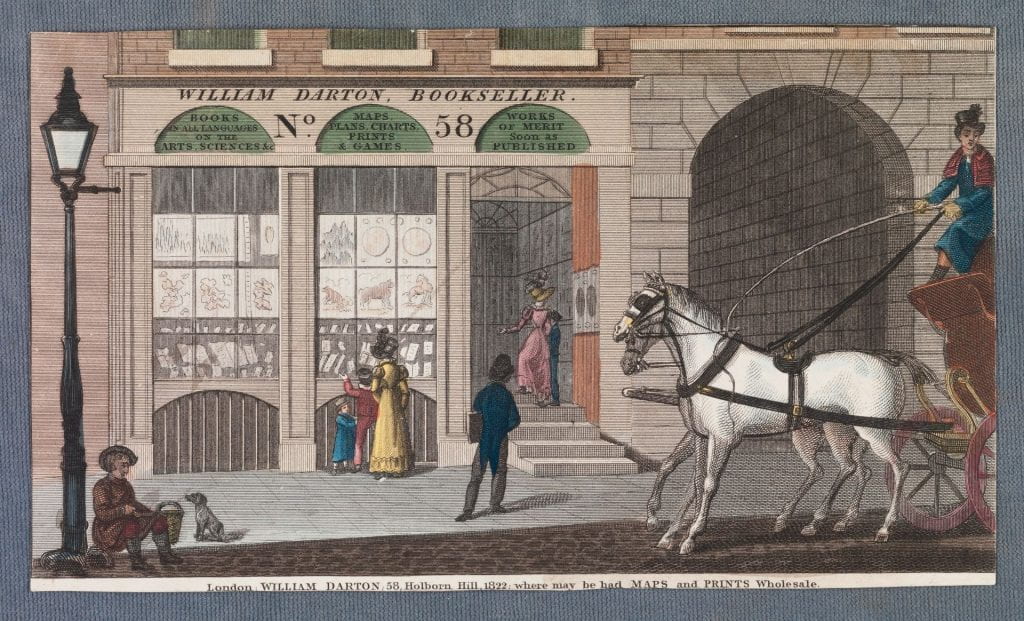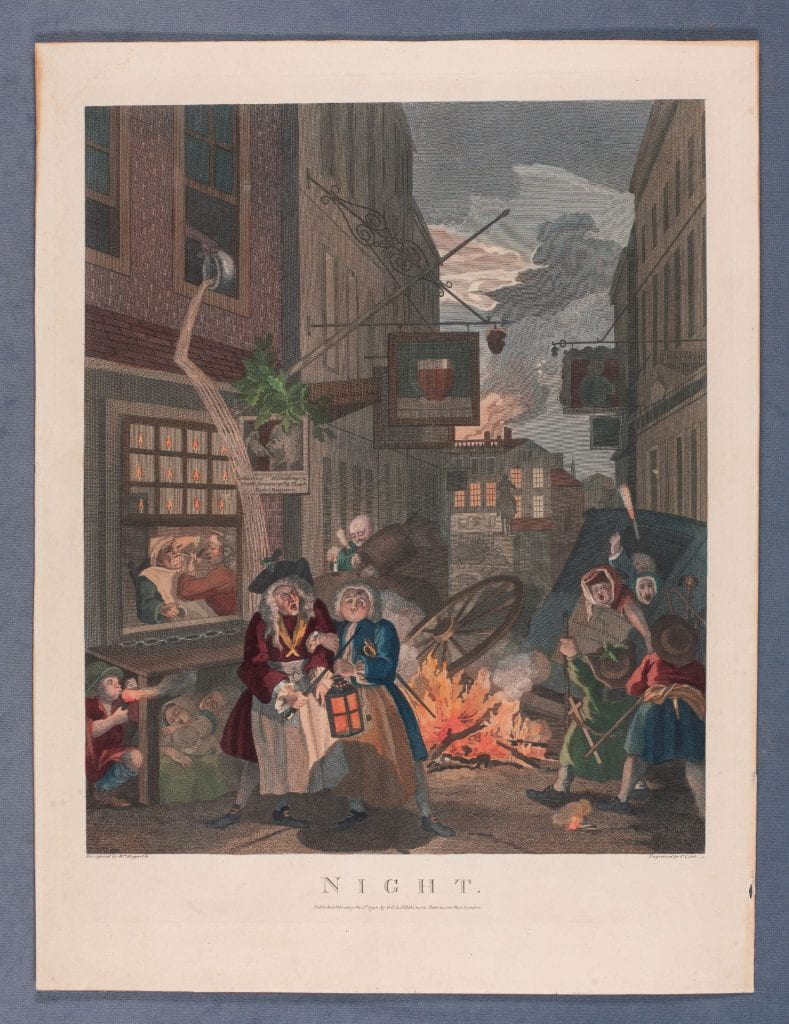
“Two pretty women leave a shop (left) to enter a coach whose back is towards the spectator. The foremost (? Duchess of Rutland), raising her petticoats high, puts a foot on the step. She is followed by (?) Lady Jersey, who crosses a step laid across a barred area or cellar, also raising her petticoats. A little girl (left) stands in the doorway. The legs of the ladies are eagerly inspected by male loungers. One man crouches at the back of the coach to peep through a quizzing-glass. The roadway on the right of the coach is crowded. Men with telescopes are indicated in the windows of the houses (right). Other spectators stand in the cellar or area looking upwards through the bars. The cover of a coal-hole in the pavement is pushed aside to show a profile. …”–British Museum online catalogue.
- Printmaker: Cruikshank, Isaac, 1764-1811, printmaker.
- Title: Peepers in Bond Street, or, The cause of the lounge!! [graphic] / I.C.
- Publication: London : Pub. April 17st [sic], 1793, by S.W. Fores, No. 3 Piccadilly …, [17 April 1793]
793.04.17.01+
Acquired December 2023









 Queen Caroline is seated in a carriage pulled by two white horses lead by a young page towards the right; she holds a walking-stick in her hand, sceptor-like over her shoulder and wears a fashionable hat and a small smile on her face as she looks out at the viewer. She is accompanied by two men in armor and wearing plummed helmets. The one on the far-side of the carriage holds a sign “The people and the Queens Guards”. Another sign in the background on the right reads “It is better to put your trust in the Lord than confidence in princes.” A crown is shown on the far right.
Queen Caroline is seated in a carriage pulled by two white horses lead by a young page towards the right; she holds a walking-stick in her hand, sceptor-like over her shoulder and wears a fashionable hat and a small smile on her face as she looks out at the viewer. She is accompanied by two men in armor and wearing plummed helmets. The one on the far-side of the carriage holds a sign “The people and the Queens Guards”. Another sign in the background on the right reads “It is better to put your trust in the Lord than confidence in princes.” A crown is shown on the far right.